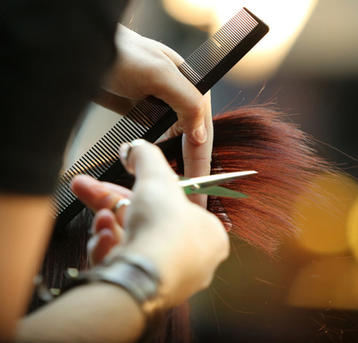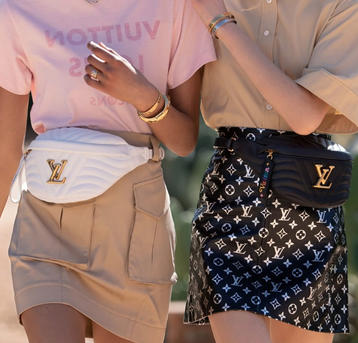13.4 million Australians read catalogues; online spending in New Zealand hits AUD$4.01 billion; South Korean cosmetic exports top US$6.3 billion; and anti-pollution skincare now a separate category.
13.4 million Australians read catalogues
The first shopping catalogue was published in Venice in 1498 and offered buyers a new-fangled invention - books. The number of catalogues may have declined over the past decade, but Australian companies still spend up big on physical catalogues because one of their continued advantages is that they land directly into the hands of consumers. According to new research from Roy Morgan, 13.4 million Australians are catalogue readers and 31 per cent admit to devouring them from cover-to-cover.
Millennials are the biggest fans of catalogues - 3.2 million - followed by Baby Boomers (3.16 million), Gen Xers (3.155 million) and Gen Zers (2.5 million). Aussies don't keep the good news of discounts and great finds to themselves, says the researcher. Over one third - 35 per cent - share hard copy catalogues with friends and family and 41 per cent spread the word digitally by emailing or texting photos from catalogues.
Catalogues are vital on the path-to-purchase, notes Roy Morgan. More than 47 per cent of catalogue fans report they made a special trip to a shop to buy a product they discovered in a catalogue. Bargains and discounts aren't the only lure. Twenty per cent of catalogue readers who spend more than $1000 say they have bought items they saw in a catalogue they had no intention of buying before they discovered it in print.
Catalogues are still very relevant and remain a key channel to reach Australian consumers in spite of the proliferation of digital media, says Michele Levine, CEO, Roy Morgan. "A clear majority of 70 per cent of Australia's 13.4 million catalogue readers say that catalogues are a helpful shopping tool."
Online spending in New Zealand hits AUD$4.01 billion
E-commerce sales in New Zealand jumped 16 per cent in 2018 to NZ$4.2 billion (AUD$4.01 billion), reports NZ Post. A huge 1.8 million shoppers - one third of the population - clicked the buy button, pushing the online sector to 8.9 per cent of total retail sales. The number of transactions also lifted 10 per cent to an average of 22 per year.
New Zealanders aged 30 to 35 are the most frequent online shoppers. But Kiwis aged 45 to 65 had the highest spend. Most transactions hover around the NZ$100 mark, but a significant 9 per cent of online consumers forked out NZ$9000 over the year. New Zealanders also spend more with local retailers - $2 out of every $3.
Buy Now Pay Later ( BNPL) methods such as Afterpay, PartPay and Laybuy were launched in New Zealand in 2017 and 250,000 Kiwis are now members of a BNPL database. Over 12 per cent of online shoppers in New Zealand bought items via BNPL in 2018, says NZ Post. Over 80 per cent of BNPL users are under 45 and women account for 61 per cent of the total. Fashion, accessories, beauty and health are major online categories. The national craze for online shopping across the Tasman is not limited to the major cities. Women aged 30 to 45 who live in rural areas are very keen online shoppers.
South Korean cosmetic exports top US$6.3 billion
As we reported recently, even though France is the number one player in the global beauty industry, the French are nervously looking over their shoulder at South Korea and Japan. Rightly so. New statistics from the Korean Ministry of Health and Welfare, reports that Korean cosmetic exports surged 26.5 per cent in 2018 to US$6.3 billion.
China was the largest international market for South Korean beauty exports, with US$2.6 billion worth of goods shipped last year. But exports to other markets also surged by 70.4 per cent to the UK, 45.9 per cent to France and 63.3 per cent to Russia. Personal care and beauty companies such as the big two, LG Household & Healthcare and AmorePacific, rank highly among South Korea's top 100 manufacturers at 25th and 30th, respectively.
Anti-pollution skincare now a separate category
A growing number of experts believe that 80 per cent of skin ageing is due to a combination of pollution, tobacco smoke, ozone, UV and infra-red rays. A new report from Future Market Insights confirms what is already apparent in the latest skincare launches. Anti-pollution ingredients such as vitamins C, A and E, plant extracts, activated charcoal and polymer-based ingredients are increasingly the heros of new anti-ageing and skin defence formulas.
Over 50 per cent of demand for anti-pollution ingredients is for skincare applications, says the US researcher. But the anti-pollution sector now encompasses sun products, cleansing clay masks, colour cosmetics, haircare and oil-based and pore-refining cleansers. Concern about the effects of pollution on the skin birthed in Asia, but growing interest in Europe and North America has now positioned anti-pollution products as a separate category rather than a trend.
Millennials aged 20 to 40 are the prime target market for anti-pollution products, says Future Market insights. A clear sign of the worldwide uptake of anti-pollution products is that the South Asian anti-pollution ingredients market accounted for only one-fifth of the global market - 21.3 per cent - in 2018.
Snippets from the Wires
- Outdoor media advertising is soaring in Australia. According to the Outdoor Media Association, revenues reached an all-time high of $927.2 million in 2018 - up 10.8 per cent.
- Italian style is in hot demand. Italy's fashion industry - fashion apparel, footwear, leathergoods, eyewear, fine and costume jewellery - pulled in revenues of 95.5 billion euros (AUD$154.6 billion) in 2018, reports Confindustria Moda. Nearly two-thirds of sales - 63.4 billion euros (AUD$102.63 billion) - came from exports.
- America's queen of stylish living, Martha Stewart, is collaborating with Canopy Growth to develop a range of CBD-based (cannabidiol) products, including cosmetics and skincare. The brand name will be announced over the next few months.
- Yeezy, the clothing and footwear collaboration between Kanye West and Adidas, is expected to generate sales of US$1.3 billion by the end of the year. Kim Kardashian's other half earns 5 per cent of royalties on sales, which adds up to US$65 million.




